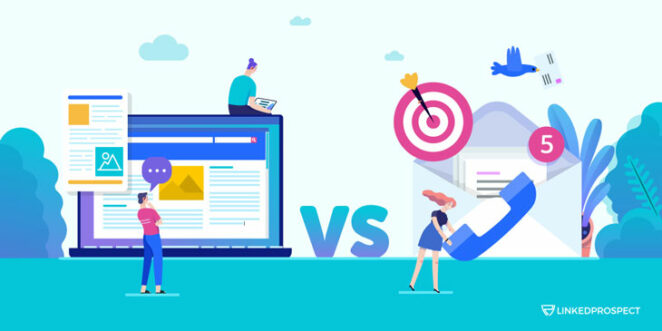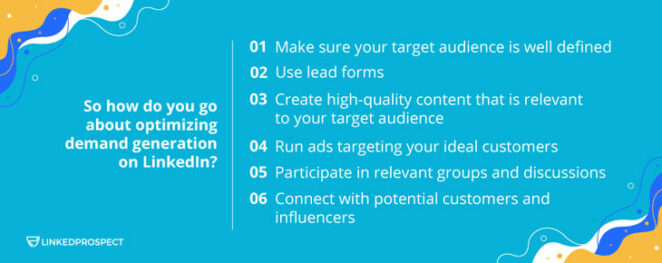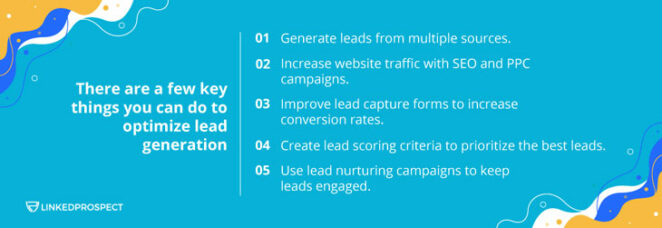

There are a lot of terms in the B2B world that can be confusing, and “demand generation” and “lead generation” are two of them. Some people use them interchangeably, but they actually have different meanings. They are two of the most important aspects of any B2B marketing campaign. However, many businesses are unsure of which one is right for them. In this article, we will discuss the differences between demand and lead generation, and how to optimize each strategy for maximum results. By the end of this article, you will be able to make an informed decision about which type of generation is best for your business!
Contents
Overview: Demand Generation Vs. Lead Generation
Lead acquisition is an essential process for any B2B marketer. It’s the process of finding and capturing potential customers who could be interested in a company’s products or services.
There are two main types of lead acquisition: demand generation and lead generation. So, which one is best for your B2B marketing? Here’s a breakdown of each:
Demand Generation
With demand generation, you’re creating content and marketing programs that generate interest in your company and its products or services. This could include things like blog posts, eBooks, webinars, and social media posts.
The goal is to get potential customers interested in what you have to offer, and then guide them towards your website or landing pages to learn more.
Demand generation is a great way to generate leads, but it takes time and effort to create quality content that will capture people’s attention. It will help if you have a strong marketing strategy in place to make this work.
Lead Generation
With lead generation, you’re targeting potential customers who have already expressed interest in your company or products. This could be through a lead form on your website, a trade show lead list, or even a purchased lead list.
The goal is to find people who are already interested in what you offer and get them into your sales funnel.
Lead generation can be a great way to get leads quickly, but it’s important to make sure you’re targeting the right people. You don’t want to waste time and money on leads that are not interested in what you have to offer.
So, which lead acquisition method is best for your B2B marketing? It really depends on your goals and what you’re trying to achieve. If you’re looking for a quick way to get leads, lead generation might be the best option. But if you’re looking to build long-term relationships with potential customers, demand generation is the way to go.
Optimizing Demand Generation On LinkedIn

So how do you go about optimizing demand generation on LinkedIn? There are a few things you can do:
- Make sure your target audience is well defined.
LinkedIn has a ton of data on its users, so you can get very specific with whom you want to target. You can target by job title, company size, industry, and more. The more specific you are, the better your results will be.
- Use lead forms.
LinkedIn allows you to create lead forms that will be shown to people who match your target audience. These forms make it easy for people to sign up for your offer, and they’re a great way to capture leads.
- Create high-quality content that is relevant to your target audience
Creating high-quality content is very crucial if you want to generate demand on LinkedIn. The content needs to be relevant to your target audience, and it should offer value if they decide to read it. This will help you attract more attention from potential customers, which could lead to more leads down the road.
- Run ads targeting your ideal customers.
Ads targeting your ideal customers can be a very effective way to generate demand for your products or services. By targeting the right people, you can ensure that the ads are seen by those who are most likely to be interested in what you have to offer.
- Participate in relevant groups and discussions.
Be active in relevant groups and discussions so that you can get your name out there and build trust with potential customers. If you can offer valuable insights and perspectives, people will be more likely to remember you when they need what you’re selling.
- Connect with potential customers and influencers.
Cross the bridge between lead and customer by connecting with potential customers and influencers. By doing this, you’ll be able to build relationships and get your name in front of more people.
Doing these things can help you optimize demand generation on LinkedIn, which can lead to more leads for your business. So if you’re looking to increase lead acquisition, make sure to focus on generating demand as well.
Optimizing Lead Generation On LinkedIn
Optimizing lead generation is a little bit different than optimizing demand generation. There are a few key things you can do to optimize lead generation:

- Generate leads from multiple sources.
The more lead sources you have, the better. This will help you to ensure that you are never without a lead. You can generate leads from your website, social media platforms, referral programs, and more.
- Increase website traffic with SEO and PPC campaigns.
Utilize the power of SEO and PPC to drive more traffic to your website. SEO will help you to rank higher in search engine results pages, while PPC will help you to get your ads in front of more people.
- Improve lead capture forms to increase conversion rates.
Level up your lead capture forms by making them more user-friendly and easy to fill out. The easier your lead capture forms are, the more likely people will fill them out.
- Create lead scoring criteria to prioritize the best leads.
Lead scoring criteria can help you to prioritize the best leads so that you can focus your attention on those who are most likely to convert.
- Use lead nurturing campaigns to keep leads engaged.
Generating leads is only half the battle–those leads need to be nurtured in order to turn them into paying customers. Lead nurturing is the process of developing relationships with leads, and it’s an integral part of lead generation. There are a few things you can do to nurture your leads:
- Send lead nurturing emails.
- Call leads regularly.
- Meet with leads in person.
- Send lead nurturing content.
By doing these things, you’ll be able to increase the number of leads you’re generating. And, you’ll be able to better qualify and convert those leads into customers.
Summary:
So, what’s the difference between demand generation and lead generation? In a nutshell, demand generation is about generating awareness and interest in your product or service, while lead generation is about converting that interest into sales leads. Both lead generation and demand generation are important for B2B marketing success. By optimizing both, you’ll be able to get the best results from your marketing campaigns. Try implementing some of the tips we’ve mentioned in this blog post and see how it goes!
